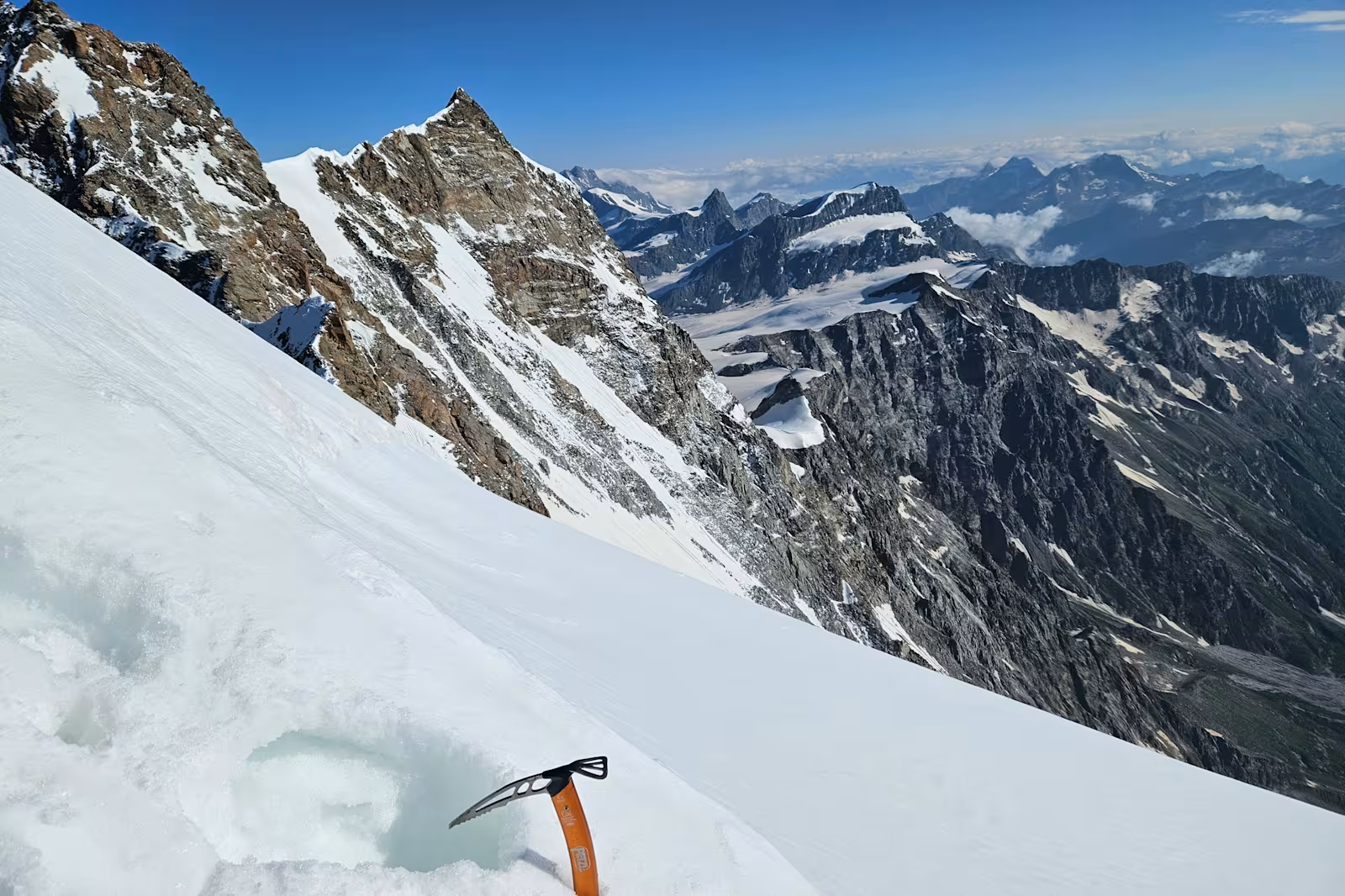Informazioni aggiuntive
The fascination of the mountains attracts many new enthusiasts every year, and most of them quickly get to know the world of high altitude. Climbing a 4000-metre peak may seem an unattainable challenge, but with good training and gradual preparation, the goal becomes much more accessible than one might think.
Athletic preparation
As with most sports, the best preparation for mountaineering is to practice it directly in the field. However, this is not always possible, especially if you live far from the mountains. In such cases, it is still possible to follow a weekly training programme. Running, cycling and, why not, also swimming, are good activities to achieve an ideal physical condition. If you add stretching exercises and strengthening of the deep muscles to these, you reduce the likelihood of tedious injuries. However, it is important to avoid excess: overloading can be counterproductive. The pace of training must be balanced between loading and unloading phases, to avoid the risk of overtraining, which would negate all efforts.
Technical Preparation
From a technical point of view, the work to be done is fundamental. Indeed, it is essential to learn perfectly the techniques of planning and moving safely on a glacier. The most difficult part is acquiring a good awareness and critical sense, which can only develop with experience and constant frequentation of the mountain alongside professionals or more experienced companions.
Acclimatisation
When planning a high mountain ascent, it is crucial to get there with the right acclimatisation. We often hear that the air at high altitude is thinner due to less oxygen. In reality, the percentage of oxygen in the air remains constant at any altitude (about 20 per cent of the air we breathe). What changes is our body's ability to ‘metabolise’ it through the lungs and blood, making breathing more strenuous and putting strain on the cardiac and respiratory systems. To best acclimatise, it is advisable to make a few hikes above 3,000 metres in the weeks leading up to the main objective.
Which summit to choose?
The Alps offer many peaks over 4000 metres. For a beginner, it is important to choose a suitable peak. Let us look at some options:
- Breithorn (4,165 m): This ascent is technically very simple and has little development. Thanks to the Cervinia lifts, it is possible to reach the summit of the Breithorn in one day, making it a particularly accessible experience.
- Gran Paradiso (4,061 m): If you are looking for a slightly more challenging adventure, the Gran Paradiso is ideal. There are no lifts, which makes it a more authentic objective and does not present any particular technical difficulties. Moreover, unlike other peaks, which share the summit with other countries, the ‘Grampa’ is the only 4000 m peak that is entirely Italian.
- Punta Zumstein (4,563 m): Another option for approaching high altitudes is Punta Zumstein, close to the more famous Punta Gnifetti (where the Capanna Margherita is located). It shares much of the ascent route with Gnifetti, but is decidedly less frequented. This peak allows you to take advantage of the convenience of the lifts, while enjoying a slightly more alternative mountaineering experience.
Keep an eye on our ALPINISM section for the coming season and in the meantime: have a good workout!!!
